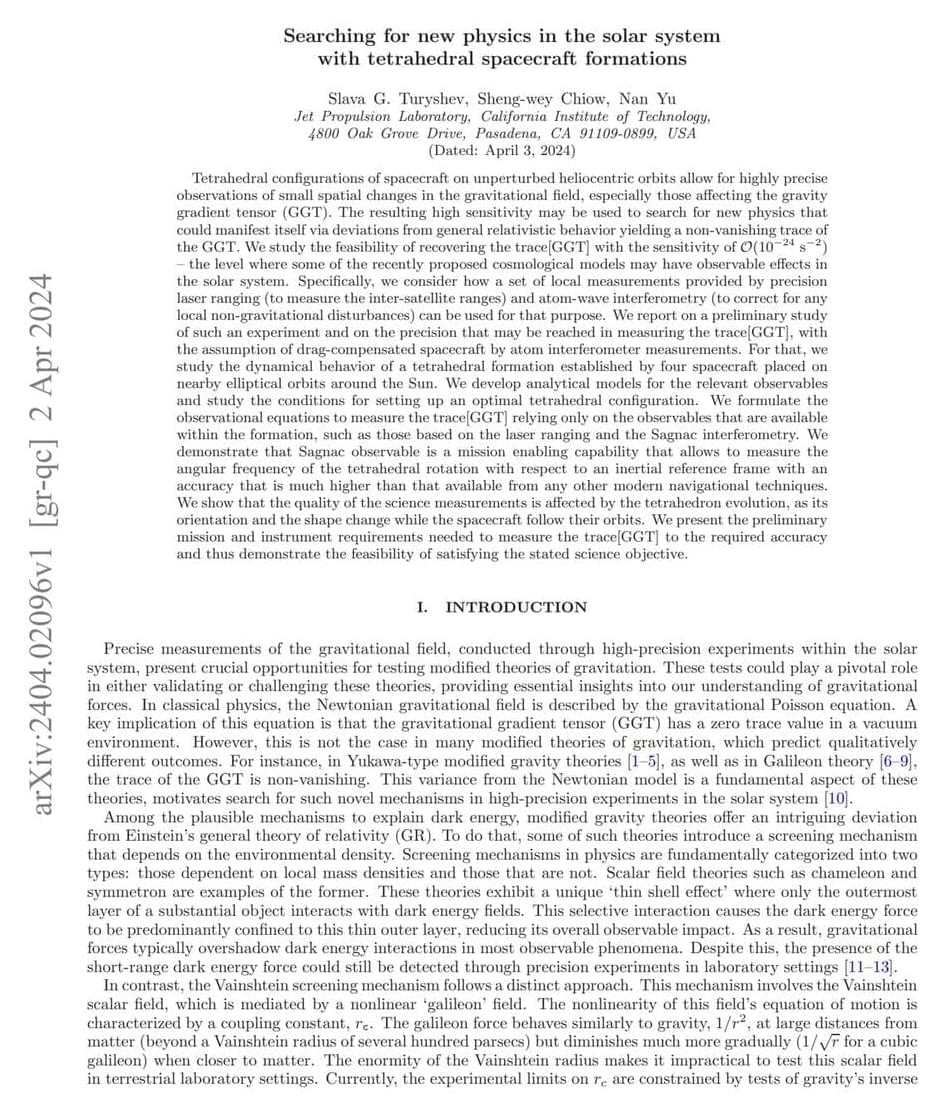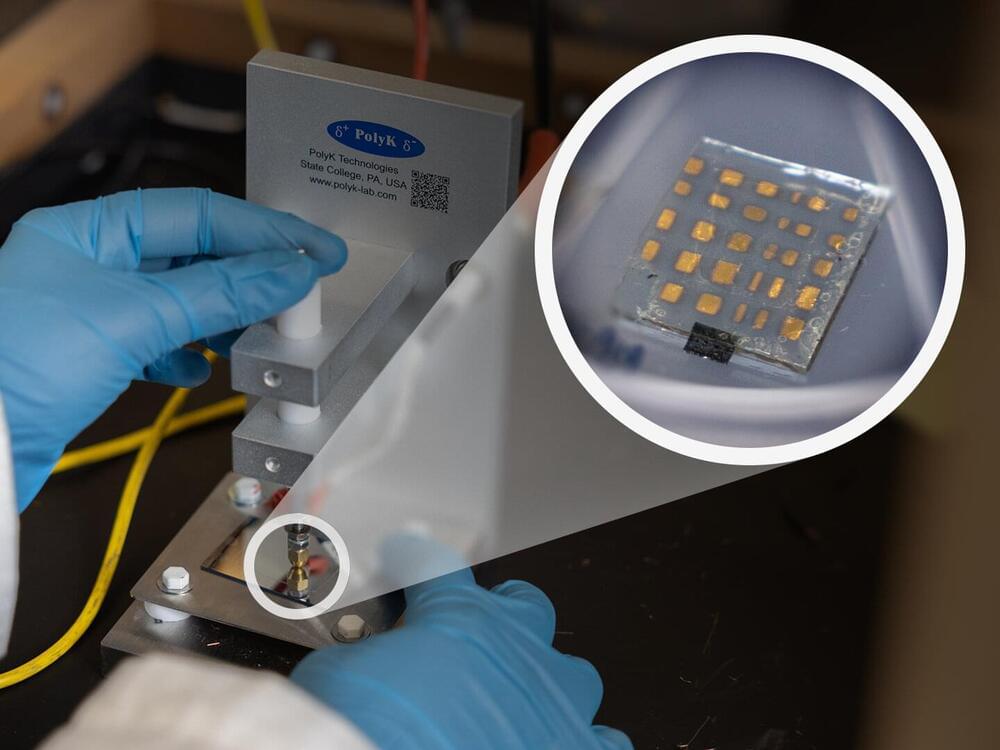Two important barriers to a stable, powerful fusion reaction have been leapt by an experiment in a small tokamak reactor, but we don’t yet know if the technique will work in larger devices.


Two important barriers to a stable, powerful fusion reaction have been leapt by an experiment in a small tokamak reactor, but we don’t yet know if the technique will work in larger devices.
Support this channel: Sign up for ESET Home internet security for FREE: https://www.eset.com/us/protecting-ar…
ESET is sponsoring the STARMUS festival in Bratislava, Slovakia May 12–17, 2024: https://www.starmus.com/
TALK TO ME on Patreon:
/ arvinash.
REFERENCES
Video: A Universe from nothing: • What came before the Big Bang? Quantu…
Video: Eternal Inflation: • Eternal Inflation: The BEST MULTIVERS…
Multiverse Theory: https://tinyurl.com/2cv2qxbm.
Math proof universe can come from nothing: https://tinyurl.com/np2vrty.
Paper of above: https://tinyurl.com/223t86z6
What came before big bang: https://tinyurl.com/y7g4pgwp.
CHAPTERS
0:00 Big bang: Lamda-CDM model.
3:09 Sponsor: ESET
4:22 Cyclic universe.
5:33 How likely is cyclic model?
7:53 Multiverse: Eternal Inflation.
11:27 Universe from nothing.
15:23 Why can’t we answer this question?
SUMMARY
What came before the Big Bang? what happened before the big bang? Since time is thought to have started at the big bang, asking what happened \.
Go to https://galaxylamps.co/sabine, use the code SABINE and get your Galaxy Projector 2.0 with 15% off!
Most astrophysicists believe that 95% of the universe is dark stuff — dark matter and dark energy. We can’t see, feel, or hear it, but it’s supposedly all around us. NASA scientists recently proposed a new experiment to test what is going on with the dark stuff in our vicinity. The want to use four small spacecraft flying around the solar system in a tetrahedron formation to look for variations from Einstein’s theory of gravity. Let’s have a look.
Paper: https://arxiv.org/abs/2404.02096v1
🤓 Check out my new quiz app ➜ http://quizwithit.com/
💌 Support me on Donorbox ➜ https://donorbox.org/swtg.
📝 Transcripts and written news on Substack ➜ https://sciencewtg.substack.com/
👉 Transcript with links to references on Patreon ➜ / sabine.
📩 Free weekly science newsletter ➜ https://sabinehossenfelder.com/newsle…
👂 Audio only podcast ➜ https://open.spotify.com/show/0MkNfXl…
🔗 Join this channel to get access to perks ➜
/ @sabinehossenfelder.
🖼️ On instagram ➜ / sciencewtg.
#science #sciencenews #astrophysics #space.
00:00 What.
03:45 How

Check out courses in science, mathematics, or computer science on Brilliant! First 30 days are free and 20% off the annual premium subscription when you use our link ➜ https://brilliant.org/sabine.
The Future of Humanity Institute announced last week that they have shut down. Located at the University of Oxford in the UK prior to its demise, the institute was one of the few places worldwide studying the risk of human extinction and a few other controversial research areas. Let’s have a look at the events leading to the institute’s closure.
🤓 Check out my new quiz app ➜ http://quizwithit.com/
💌 Support me on Donorbox ➜ https://donorbox.org/swtg.
📝 Transcripts and written news on Substack ➜ https://sciencewtg.substack.com/
👉 Transcript with links to references on Patreon ➜ / sabine.
📩 Free weekly science newsletter ➜ https://sabinehossenfelder.com/newsle…
👂 Audio only podcast ➜ https://open.spotify.com/show/0MkNfXl…
🔗 Join this channel to get access to perks ➜
/ @sabinehossenfelder.
🖼️ On instagram ➜ / sciencewtg.
#science #sciencenews #FHI

Among the myriad of projects that challenge traditional norms and offer innovative approaches to gaming and game development, hand gesture-based systems undeniably stand in a league of their own, a fact that’s recently been reaffirmed by Programmer and ML enthusiast Ayaan Khan.
Over on LinkedIn, Ayaan presented an impressive setup he devised during his high school years that enables one to play racing games by simply waving fingers in the air and making different hand gestures in front of a webcam. Inspired by the idea of combining technology with gaming, the system allows users to steer virtual cars by detecting which fingers are displayed to the camera, offering a truly unique gaming experience.
In the demo shared by Ayaan, he showed how the system can be utilized to play EA’s 2017 racing game, Need for Speed Payback. While the developer refrained from revealing the inner workings of his system, he hinted that it relies primarily on Python, OpenCV, and MediaPipe, providing a clue for aspiring developers interested in replicating the setup. You can check out Ayaan’s original post by clicking this link.

In the quest for more efficient and sustainable energy solutions, a multi-university research team has reached a significant milestone in capacitor technology. Researchers from the University of Houston, Jackson State University and Howard University have developed a new type of flexible high-energy-density capacitor, which is a device that stores energy.
Though the prototype device is just 1-inch by 1-inch, scaled-up versions of this innovation could potentially revolutionize energy storage systems across various industries, including medical, aviation, auto (EV), consumer electronics and defense.
The researchers shared the study details in a paper titled “Ultrahigh Capacitive Energy Density in Stratified 2D Nanofiller-Based Polymer Dielectric Films,” published in the journal ACS Nano.

AMOLF researchers, in collaboration with Delft University of Technology, have succeeded in bringing light waves to a halt by deforming the two-dimensional photonic crystal that contains them. The researchers show that even a subtle deformation can have a substantial effect on photons in the crystal. This resembles the effect that a magnetic field has on electrons.
“This principle offers a new approach to slow down light fields and thereby enhance their strength. Realizing this on a chip is particularly important for many applications,” says AMOLF-group leader Ewold Verhagen.
The researchers have published their findings in the journal Nature Photonics. Simultaneously, a research team from Pennsylvania State University has published an article in the same journal about how they demonstrated—independently from the Dutch team—an identical effect.

Scientists champion global genomic surveillance using the latest technologies and a ‘One Health’ approach to protect against novel pathogens like avian influenza and antimicrobial resistance, catching epidemics before they start.
The COVID-19 pandemic turned the world upside down. In fighting it, one of our most important weapons was genomic surveillance, based on whole genome sequencing, which collects all the genetic data of a given microorganism. This powerful technology tracked the spread and evolution of the virus, helping to guide public health responses and the development of vaccines and treatments.
But genomic surveillance could do much more to reduce the toll of disease and death worldwide than just protect us from COVID-19. Writing in the journal Frontiers in Science, an international collective of clinical and public health microbiologists from the European Society for Clinical Microbiology and Infectious Diseases (ESCMID) calls for investment in technology, capacity, expertise, and collaboration to put genomic surveillance of pathogens at the forefront of future pandemic preparedness.

How can we guarantee that data sent over the internet is only accessible to its intended recipient? Currently, our data is secured using encryption methods based on the premise that factoring large numbers is a complex task. However, as quantum computing advances, these encryption techniques may become vulnerable and potentially ineffective in the future.
Encryption by means of physical laws
Tobias Vogl, a professor of Quantum Communication Systems Engineering, is working on an encryption process that relies on principles of physics. “Security will be based on the information being encoded into individual light particles and then transmitted. The laws of physics do not permit this information to be extracted or copied. When the information is intercepted, the light particles change their characteristics. Because we can measure these state changes, any attempt to intercept the transmitted data will be recognized immediately, regardless of future advances in technology,” says Tobias Vogl.